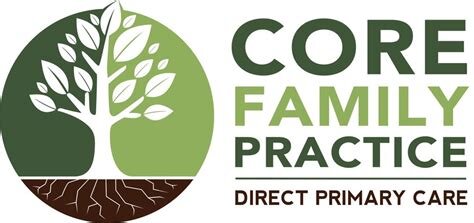Breast Cancer Awareness Month
It is officially autumn! Fall is a busy time with back to school, football, postseason baseball, Halloween, and so much more. In all of the chaos, it is important to take a moment to acknowledge that October is nationally recognized as Breast Cancer Awareness Month. Breast cancer is the most common cancer affecting females in the US with 300,000 cases annually and is the leading cause of female death worldwide. Breast cancer is the culprit for 40,000 deaths in the US annually.
With that being said, mortality rates have been decreasing over the past five decades due to improvements in screening and treatments. The majority of breast cancer cases are asymptomatic and found on routine screening mammograms.
What are the signs to be on the look out for in between mammograms? A lump or mass, skin changes on the breast, nipple discharge, or swelling in the armpit. Both males and females should reach out to their doctor if any of these symptoms occur.
What are the recommendations for breast cancer screening? This depends on your personal risk. As of April 2024, the United States Preventive Services Task Force (USPSTF) updated their recommendations to begin screening at age 40 for females at average risk. This was previously 50. Different societies have varying guidelines for frequency of screening. The USPSTF recommends screening every other year until 75. The American Cancer Society recommends screening annually from 40-44 and again from 55 and up, with every other year between 45 to 54. Frequency (whether every 1 or 2 years) should depend on an individual’s risk factors as well as preference. For patients above the age of 75, ongoing screening is dependent on patient preference and estimated life expectancy of at least 10 years. Females at higher risk, should discuss individual screening recommendations with their PCP.
Let’s talk about risk factors. Roughly 50% of breast cancers can be attributed to known risk factors with another 10% of cases attributable to genetics.
Factors that INCREASE the risk of breast cancer:
Age: Risk progressively increases as you get older. Risk from ages 50-59 is 2.4% (1 in 42) vs 70+ at 7% (1 in 14).
Sex: Females are 100x more likely to develop breast cancer than males.
Race/ethnicity: In the US, White females are associated with the highest risk of breast cancer. Ashkenazi Jewish females are also at higher risk.
Weight: After menopause, higher BMI and/or body fat are associated with increased risk. Interestingly, before menopause the reverse is true. The reason for this is unknown.
Stature: The taller you are, the more at risk you are to develop breast cancer. The reason for this is also unknown.
Breast density: Females with denser breasts (as seen on mammogram) are at higher risk for breast cancer. Breast density is typically inherited, but increased physical activity and a low-fat diet can help reduce breast density.
Bone density: Higher bone density (which is desirable) is associated with a higher risk of breast cancer.
Hormone therapy: This has been a controversial topic in recent years. Research suggests that combined hormone therapy (estrogen and progestin) in your 50s has a very low attributable risk of breast cancer. The risk of breast cancer is, however, significantly increased for someone over 60 or more than 10 years after menopause when taking combined hormone therapy. Estrogen alone, which is appropriate in those who have had a hysterectomy, are not at increased risk, regardless of age.
Contraceptives: There is increased risk while taking combined estrogen and progestin contraceptives. This risk resolves within 2-5 years of stopping the medication.
Menstrual history: The younger someone started menstruation (menarche), the higher the risk.
Pregnancy history: No pregnancies or pregnancies later in life are at higher risk.
Family history: Family history of breast and/or ovarian cancer in female first-degree relatives significantly increases risk of breast cancer, as does the age of the diagnosis. A first-degree female relative diagnosed <30 is associated with a 3-fold higher risk. If diagnosed after 60, the risk is 1.5-fold.
Alcohol and smoking: Both increase risk of breast cancer. The recommendation is to limit alcohol to 1 drink/day.
Radiation: The highest risk is associated with younger ages of high-dose radiation exposure (ages 10-30). This does not include mammogram radiation. The radiation associated with mammograms is very low, causing the benefit of screening to outweigh the risk of low dose radiation.
Factors that DECREASE the risk of breast cancer:
Breastfeeding: Breastfeeding in general decreased risk of breast cancer. The longer the duration of breastfeeding, the higher the benefit.
Pregnancy history: Childbirth at a young age is associated with a lower risk of breast cancer.
Weight: In postmenopausal females, weight loss decreases risk.
Diet: A low-fat diet with increased fruits, vegetables, and whole grains reduces risk of breast cancer, especially in postmenopausal females.
Exercise: Increased physical activity decreases risk.
Chemoprevention/mastectomy: In high risk individuals (such as BRCA carriers), there are preventive medications and procedures that can be considered.
When was your last mammogram? Prevention is the best treatment. Early detection saves lives! Be sure to stay up to date on your screenings and minimize your risk factors.
References
1. Practice Bulletin Number 179: Breast Cancer Risk Assessment and Screening in Average-Risk Women. Obstetrics & Gynecology. 2017;130(1):e1-e16. American College of Obstetricians and Gynecologists. Available at: https://journals.lww.com/greenjournal/fulltext/2017/07000/practicebulletinnumber179breastcancer_risk.50.aspx
2. Breast Cancer Facts & Figures 2024. American Cancer Society. Published 2024. Available at: https://www.cancer.org/content/dam/cancer-org/research/cancer-facts-and-statistics/breast-cancer-facts-and-figures/2024/breast-cancer-facts-and-figures-2024.pdf
3. Wang Z, Feng L, Xia Y, et al. Risk Factors for Breast Cancer: An Umbrella Review of Observational Cohort Studies and Causal Relationship Analysis. Frontiers in Oncology. 2025;15:1541233. PMID: 40386557.
4. Pace LE, Keating NL. A Systematic Assessment of Benefits and Risks to Guide Breast Cancer Screening Decisions. JAMA. 2014;311(13):1327-1335. Available at: https://jamanetwork.com/journals/jama/article-abstract/2818206?utmsource=openevidence&utmmedium=referral#google_vignette
5. Clinical features, diagnosis, and staging of newly diagnosed breast cancer. UpToDate. Available at: https://www.uptodate.com/contents/clinical-features-diagnosis-and-staging-of-newly-diagnosed-breast-cancer?search=breast%20cancer&source=searchresult&selectedTitle=2~150&usagetype=default&display_rank=2
6. Factors that modify breast cancer risk in females. UpToDate. Available at: https://www.uptodate.com/contents/factors-that-modify-breast-cancer-risk-in-females?search=breast%20cancer&source=searchresult&selectedTitle=6~150&usagetype=default&display_rank=6#H9304554
7. Menopausal hormone therapy: Benefits and risks. UpToDate. Available at: https://www.uptodate.com/contents/menopausal-hormone-therapy-benefits-and-risks?sectionName=ESTIMATES%20OF%20RISK%20IN%20WOMEN%2050%20TO%2059%20YEARS&search=breast%20cancer&topicRef=7392&anchor=H507693&source=see_link#H507693
